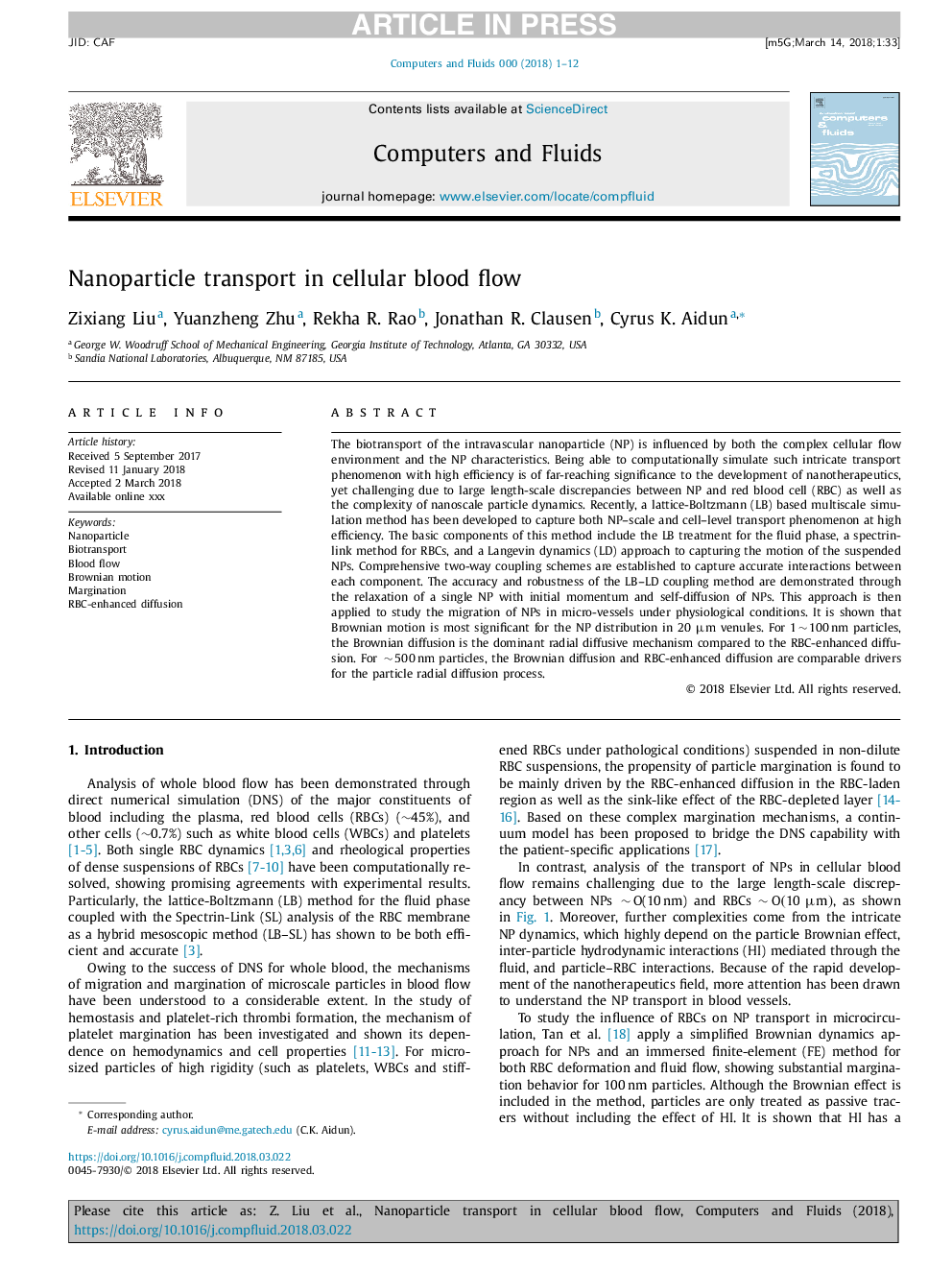| کد مقاله | کد نشریه | سال انتشار | مقاله انگلیسی | نسخه تمام متن |
|---|---|---|---|---|
| 7155882 | 1462639 | 2018 | 12 صفحه PDF | دانلود رایگان |
عنوان انگلیسی مقاله ISI
Nanoparticle transport in cellular blood flow
ترجمه فارسی عنوان
انتقال نانو ذرات در جریان خون سلولی
دانلود مقاله + سفارش ترجمه
دانلود مقاله ISI انگلیسی
رایگان برای ایرانیان
کلمات کلیدی
موضوعات مرتبط
مهندسی و علوم پایه
سایر رشته های مهندسی
مکانیک محاسباتی
چکیده انگلیسی
The biotransport of the intravascular nanoparticle (NP) is influenced by both the complex cellular flow environment and the NP characteristics. Being able to computationally simulate such intricate transport phenomenon with high efficiency is of far-reaching significance to the development of nanotherapeutics, yet challenging due to large length-scale discrepancies between NP and red blood cell (RBC) as well as the complexity of nanoscale particle dynamics. Recently, a lattice-Boltzmann (LB) based multiscale simulation method has been developed to capture both NP-scale and cell-level transport phenomenon at high efficiency. The basic components of this method include the LB treatment for the fluid phase, a spectrin-link method for RBCs, and a Langevin dynamics (LD) approach to capturing the motion of the suspended NPs. Comprehensive two-way coupling schemes are established to capture accurate interactions between each component. The accuracy and robustness of the LB-LD coupling method are demonstrated through the relaxation of a single NP with initial momentum and self-diffusion of NPs. This approach is then applied to study the migration of NPs in micro-vessels under physiological conditions. It is shown that Brownian motion is most significant for the NP distribution in 20μm venules. For 1â¯â¼â¯100ânm particles, the Brownian diffusion is the dominant radial diffusive mechanism compared to the RBC-enhanced diffusion. For â¯â¼â¯500ânm particles, the Brownian diffusion and RBC-enhanced diffusion are comparable drivers for the particle radial diffusion process.
ناشر
Database: Elsevier - ScienceDirect (ساینس دایرکت)
Journal: Computers & Fluids - Volume 172, 30 August 2018, Pages 609-620
Journal: Computers & Fluids - Volume 172, 30 August 2018, Pages 609-620
نویسندگان
Zixiang Liu, Yuanzheng Zhu, Rekha R. Rao, Jonathan R. Clausen, Cyrus K. Aidun,
